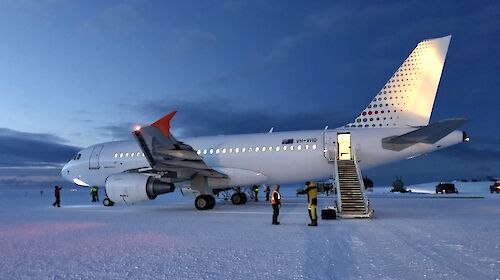“I had no idea about Antarctica when I started at the Australian Antarctic Division in 1982,” she said.
“I came in on a 17 week training scheme in the Registry section (which included records, office services and mail processing) and then I kept applying for temporary jobs as they came up.”
With no firm employment commitment, however, Leanne sat the Public Service merit selection exam and was offered a job with the Australian Taxation Office. Just before she left, a permanent position in the Antarctic Division’s Registry section opened up, and the rest is history.
“I ended up here permanently and then I just fell into things from there. I never had a definite plan or career path.”
What Leanne did have was a willingness to try anything and work hard at it. This included working in various Head Office positions in finance, property, reception and expeditioner liaison, and later as a Voyage Leader, Deputy Voyage Leader, and an Operations Coordinator at Casey and Davis stations.









